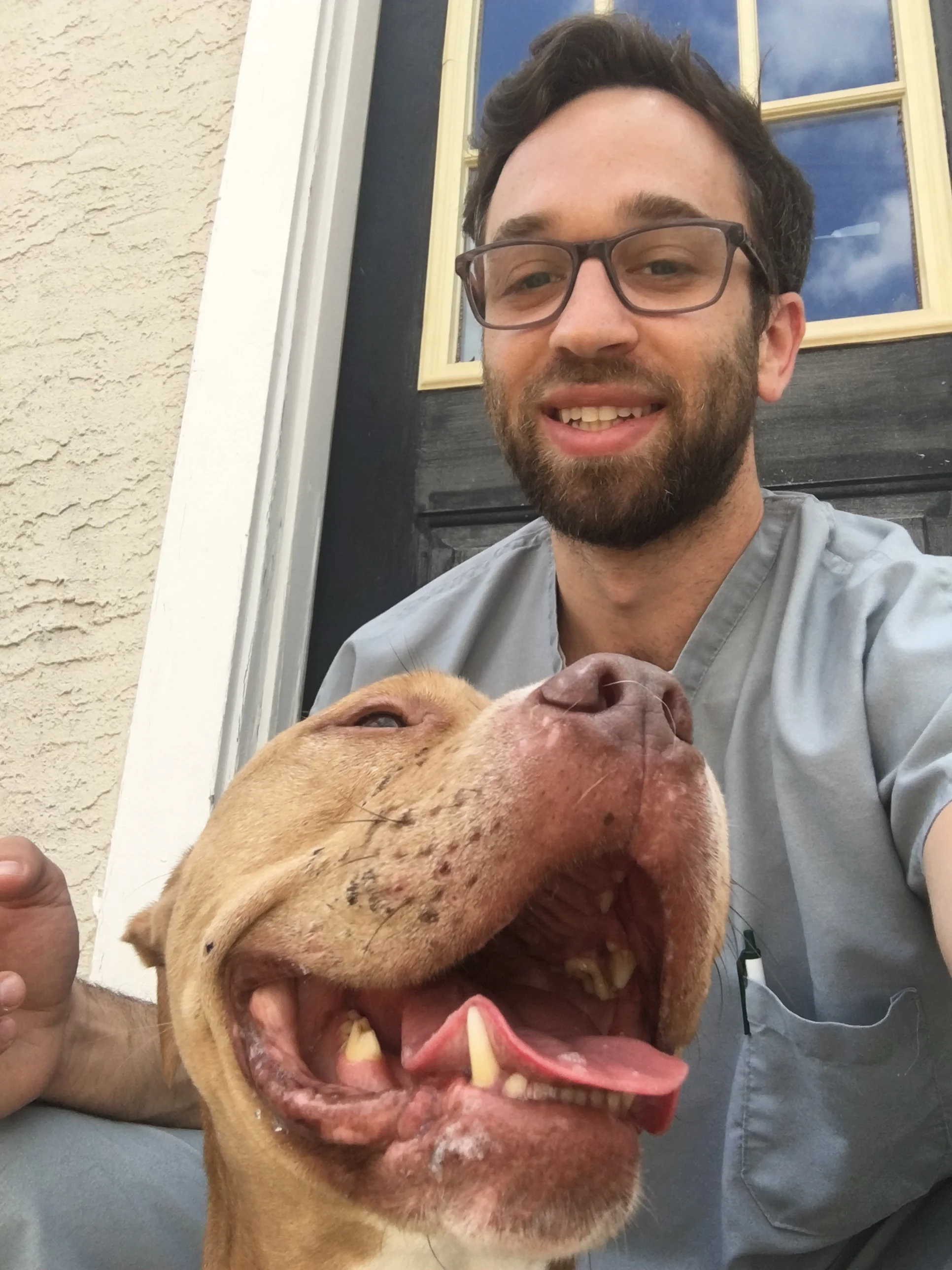Q: What are top three reasons people bring their dogs to the vet for during the summer?
Once the weather begins to warm up, dogs often develop skin disease. The change in weather fills the environment with pollens, fleas, and ticks which can create an array of problems with dogs’ skin. Pollens exacerbate pre-existing allergies and can lead to secondary skin infections. Fleas, in a similar fashion to allergens, cause dogs to itch and scratch, which creates red skin and patches of hair loss. Ticks are an entirely different beast. After biting a dog for as little as eight hours they can transmit deadly infectious diseases. Fortunately allergies, fleas, and ticks are all treatable or preventable.
Summer is also the time of year when we all get outdoors with our dogs. Whether you and your dog are on a jog, a hike, or swimming in the ocean, overexertion is an all-too-common reason to visit the veterinary emergency room. Humans sweat from pores throughout their entire body, but sweat plays a very small role in cooling our dogs. Instead, they control their temperatures by panting and dilating their blood vessels. These mechanisms of cooling are not as efficient as humans and can quickly lead to heat stroke. To avoid overheating, exercise your dog in the early morning or late in the evening, provide your dog with plenty of water, and make sure the temperature is cool in your home..
Viral infections are another common reason owners bring their dogs to the vet hospital in the summer. As the temperature warms up, we bring our dogs to parks, we go on vacation and board our animals, and local daycares are swarming with puppy energy. The increased contact among dogs aids in the transmission of common viruses that are spread through nasal and ocular secretions. Many of these dogs present to the vet for coughing, runny noses, and acting lethargic. Fortunately, there are vaccines available to help prevent against the common viral infections and your veterinarian will help you decide which are best for your pup based on their lifestyle.
Q: What’s your top three tips for keeping dogs safe during summer season?
The summer months are generally the busiest time of year for veterinarians. School is out, the weather is beautiful, and the dog parks are crowded. Prevention is key to keeping your dogs safe and healthy.
Flea and tick prevention is relatively affordable and easy to use. Today there are three commonly used products: a chewable tablet, a topical liquid, and a long lasting collar. For dogs that swim often, stick with the chewable tablets as they don’t wash off. Topical liquids are a great choice for dogs who spend most of their time on a leash and out of the woods. Collars are just as effective as the chewable and liquid products and last for up to 8 months.
Vaccines are critical in preventing the spread of viruses during the summer months. The Parvovirus, a deadly virus that causes vomiting and diarrhea, is all too common, yet easily prevented with a sound vaccine protocol. Canine Influenza and Kennel Cough are the most common upper respiratory infections seen during the summer months. If you plan on taking your dog to a heavily populated area, always make sure they are protected.
Keeping your dog cool in the summer requires more than a pair of fancy sunglasses and a fedora. Don’t expect your dog to get outside and immediately run a marathon; build up their endurance starting with short, controlled jogs. Take extra precautions if you have a brachycephalic (“smoosh-faced” dog) breed as they overheat very quickly. Provide them with plenty of water to drink or a doggie popsicle after exercise and make sure they have a cool environment for recovery.
Q. What should people think about when traveling with their dog during the summer months?
Just as most of us plan ahead for vacation, you should do the same for your pet. Visiting your veterinarian before leaving the country is almost always a necessity. Many countries have strict vaccine protocols and require an up-to-date veterinary health certificate. Some countries have quarantine periods of up to six months. If you’re staying in the United States, call ahead to your hotels to ensure they are pet friendly.
After packing your suitcase, make sure you pack your dogs’ too. By pre-measuring your dog's food and storing it in plastic bags, you won’t have to stop and shop along the way (pack an extra meal or two to give as treats). If your dog takes medications, make sure you give yourself enough time to obtain refills from your veterinarian or local pharmacy. Don’t forget a water bowl, your dogs bed, and their favorite toy!
Does your dog get anxious or nauseous in the car or on the plane? Do they pant or pace? How about hypersalivate or vomit? If so, check in with your family veterinarian before traveling and let them know your concerns. There’s most likely a medication can that be prescribed to keep your dog safe and comfortable for all types of travel.
The summer months are an exciting time to be a dog owner. From hiking to swimming and lounging on the dog beach to playing fetch there are plenty of outdoor activities to share. Be safe, careful, and follow up with your veterinarian with any concerns.











